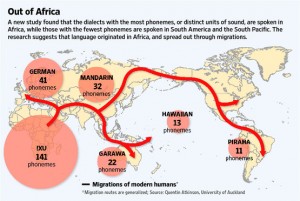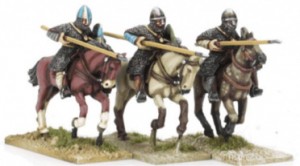af Robin Engelhardt, cand.scient., Ph.D., forfatter og journalist
Hold da op. Jeg vidste slet ikke at man kunne skrive så sjovt, så frækt og så informativt om noget så kedeligt som finanskrisen. Grunden til at jeg købte bogen Griftopia af Matt Taibbi var, at jeg er en af dem, som længe har forsøgt – eller tænkt på at forsøge – at forstå, hvad der egentlig foregik under finanskrisen, og hvordan det sidenhen er lykkes disse kriminelle bankmænd og skrupelløse børsmæglere at slippe for straf.
Bogen var et godt valg. Griftopia betyder noget i retning af Slyngelstan, dvs. et land, der styres af grådige skurke og koldblodige svindlere (i insiderkredse kaldt ’banksters’), der ved at smøre den politiske klasse har formået at deregulere hele den internationale finansielle sektor, og nu faldbyder giftige finansprodukter til folk og fæ. Taibbi blev i 2009 kendt for at kalde Goldman Sachs for en kæmpe vampyrblæksprutte, der har sat sig på fjæset af menneskeheden. Med sin bog sætter han trumf på og viser, at det ikke kun er Goldman Sachs, men stort set hele Wall Street der har sagt farvel til alle hensyn, og med slimede og grådige tentakler suger velstanden ud af stat og folk.
Problemet er ikke staten. Problemet er, at staten er blevet solgt til Wall Street. I et særdeles underholdende og oplyst første kapitel viser Taibbi, hvorfor teaparty-bevægelsen (og i det hele taget den åndssvage højre-venstre-opdeling af mennesker) har mistet enhver relevans i forhold til hvad der i virkeligheden er sket. Mens højrefløjen ser bureaukrati og lokalpolitik som ondskabens rod, ser venstrefløjen sig sur på entreprenører. Men de virkelige dumme svin er finansbosserne, som har købt bureaukratiet og forvandlet økonomien til et kæmpe high-tech casino, der med credit default swaps og collateralized debt obligations dræber både lokalmiljø og entreprenørskab.
Historien om ”the biggest asshole in the universe”, Alan Greenspan, spores tilbage til kulten omkring Ayn Rand og hendes vanvittige forsøg fra 1950’erne på at forfremme grådighed (som hun kaldte ’objectivism’ og ’rational egosim’) til en filosofisk nødvendighed. Greenspan var nok den mest obskure akolut af alle i denne bevægelse, men det lykkedes ham at blive chef for FED, det amerikanske federal reserve system, hvor han målrettet har kanaliseret rigdomme til den økonomiske elite via dereguleringer og printning af trillioner af papirdollar.
Et grundigt kapitel gennemgår, hvordan så mange amerikanere måtte gå fra hus og hjem, et andet fortæller, hvordan handlen med råvarer fjerner al relation til udbud og efterspørgsel, og hvorfor priserne på korn og ris, osv. er begyndt at stige efter at spekulanter har fået lov til at dominere markedet. Et tredje kapitel forklarer, hvordan den amerikanske sundhedsreform er blevet en parodi på sig selv, fordi det største problem ved det amerikanske sundhedssystem (papirarbejdet med forsikringsselskaberne, der ofte fylder mere end 50 % af arbejdsbyrden i et sygehus) slet ikke er blevet fjernet, og faktisk har fået frihjul på den betingelse, at de betaler demokraternes valgkampagne de næste to valg. Det sidste kapitel tager fat i Goldman Sachs, og viser, hvordan denne vampyrblæksprutte har formået at bore sine slimede tentakler ned i alle dele af den globale økonomi og placere små Goldman Sachs robotter overalt, for at bøje og dreje regler, der måtte hindre jagten på den personlige berigelse.
Det bedste ved bogen er, at den faktisk forklarer hvordan den slags foregår. Og når man har forstået lurendrejeriet, kan man ikke andet end at tage sig til hovedet og spørge, hvordan i hulen offentligheden har kunnet gå disse svindlere på limpinden – og stadig gør det! ”The new Mr. Dollar”, Allan Greenspan, var den sande designer af boble-økonomien, og hver gang boblen brast, trykkede Greenspan bare flere penge og lovede sine elskede investorer på Wall Street at staten, i tilfælde af ny bobler, altid vil være klar med flere penge og bailouts. De småbeløb som Goldman Sachs og Citigroup og Deutsche Bank og JPMorgan Chase og AIG og Morgan Stanley har måttet betale i bøde, når de blev fanget, har blot bekræftet deres strategi: Opfind nye Ponzi-skemaer, tag hvad du kan, få et trecifret millionbeløb i bonus, og lad fanden tage resten.
Hvis du læser bogen, vil du forstå, hvor langt ude nogle af alle disse finansprodukter er. CDO’s, derivativer, CDS’er, LIBOR, NINJA-lån, CFMA, LTCM, short selling, monoline insurance, CDO squared… du lærer det hele nemt og med en følelse, der er en blanding af hysterisk latter og klukkende fortvivlelse.
Taibbi har skrevet en overfed bog. Han kombinerer banebrydende reportage med grundig research, og fortæller den deprimerende historie om den efterhånden uovervindelige finanselite i et særdeles saftigt sprog.
Matt Taibbi
Griftopia – Bubble Machines, Vampire Squids, and the Long Con That Is Breaking America,
252 sider, ISBN 978-0-385 52995-2, Spiegel & Grau, 2010

